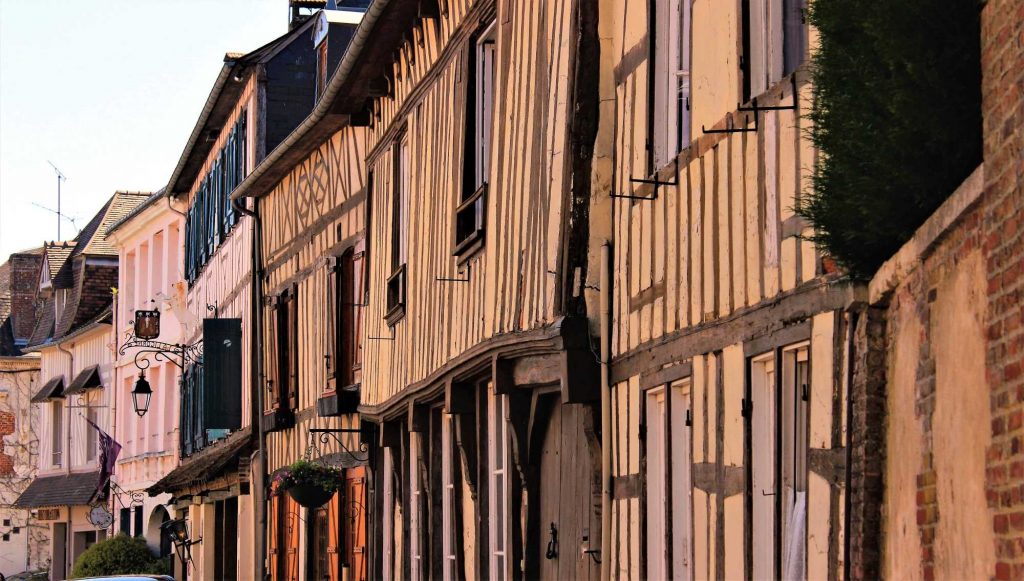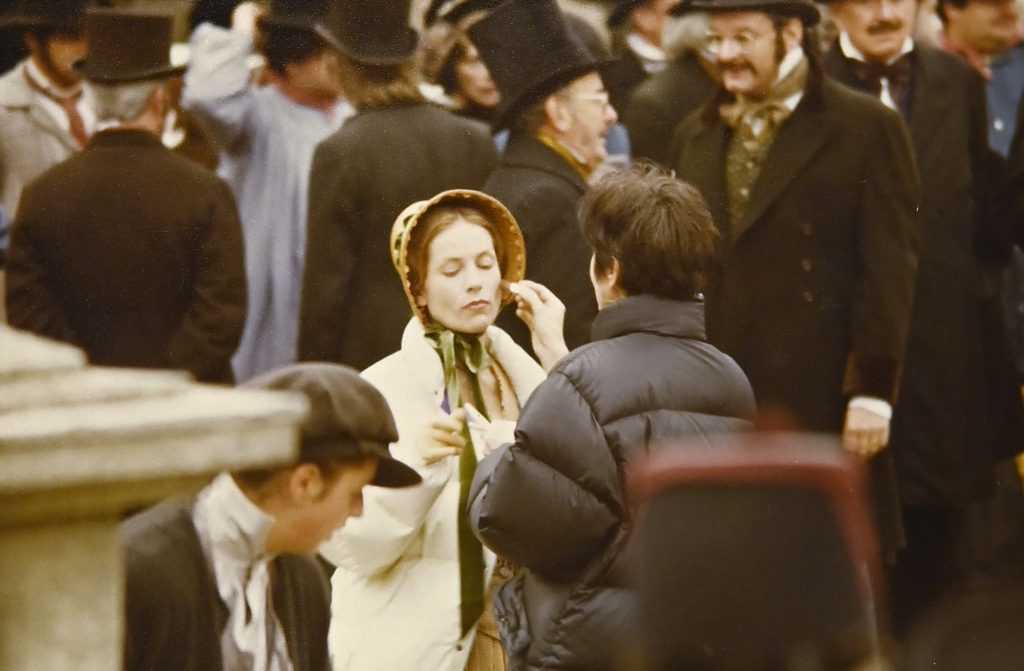Lyons-la-Forêt : a little history
Discover the unique history of this village classified as one of the Most Beautiful Villages in France
Initially settled on the banks of the Lieure in the Bout-de-bas district, the existence of Lyons-la-Forêt, named Leons until the 11th century, dates back to Gallo-Roman times. Traces of a 3rd century theatre, designed to accommodate up to 2000 people, attest to a settlement linked to the existence of a Roman road from Rouen to Beauvais which crossed the Lieure at this point.

The creation of the Duchy of Normandy by the Treaty of Saint-Clair-sur-Epte, signed in 911 between Charles the Simple and Rollon, changed the course of the history of this small village near the border between the Kingdom of France and the Duchy of Normandy.
A medieval fortress in the heart of the Lyons forest
In 1060, Guillaume le Conquérant ordered the construction of a defensive position on a rocky spur located 600 m from the initial site of the village, which had taken the name of Saint-Denis-en-Lyons, in reference to the church of Saint-Denis, whose presence is attested as early as 1050.
His youngest son, Henri 1er Beauclerc, King of England and Duke of Normandy, had a castle built at the beginning of the 12th century. The village was then reorganised around this fortress, which commanded the forts located in the Andelle valley, such as Vascoeuil and Pont-Saint-Pierre.
This castle consisted of a stone keep 18 metres wide, sitting on this rocky spur extending to 7000 m2. It was flanked by an annex to the north, four square towers with an architecture similar to that of the Tower of London and a bailey to the east, where the Benserade square is today.

The map of Lyons-la-Forêt allows you to locate the main elements and to understand the particular configuration of the village. The old ramparts and one of the old entrance gates are visible at the level of the former Benedictine convent. A section of the wall of one of the old entrance gates can be recognised by its protruding flints, along the old Maréchaussée, a stone’s throw from the stele evoking Henry I Beauclerc, who died in his Lyons castle in 1135 of lamprey indigestion.
A place favoured by the Dukes of Normandy and the Kings of France
Renowned for its abundance of game, the forest of Lyons has always been one of the most prestigious royal hunting grounds and remained so until the French Revolution. Dukes of Normandy and kings of France, all fervent lovers of hunting, succeeded one another in Lyons-la-Forêt. Richard the Lionheart, Philippe Auguste, Louis IX (Saint Louis), Philippe Le Bel and Charles IX came to hunt there, but also to govern. One hundred and ten royal charters were adopted between 1050 and 1298 at the castle of Lyons.
Charles IX (1550-1574) was the last king to stay there regularly. He fell in love with the nearby Andelle valley and decided to build a castle in Charleval, which was named after him. The project remained unfinished after the king’s death.
Preserved 17th and 18th century built heritage
Most of the village’s half-timbered and brick houses, which make up the village’s current building heritage, were built in the 17th and 18th centuries. A fire in 1590 explains the small number of houses dating from an earlier period. The castle of Croix-Mesnil on the heights of Lyons, as well as those of Fleury-la-Forêt, Saint-Crespin and Rosay-sur-Lieure also date from the 17th century.

A small administrative capital in the 18th century
In the 18th century, the Duke of Penthièvre, the last lord of Lyons, turned Lyons-la-Forêt into an administrative city: he ordered the construction of a bailliage hall, a small local court, and had the hall completely renovated. Lyons-la-Forêt thus became a small administrative capital inhabited by notables, many of whom were in the legal profession.
The village then had 1,650 inhabitants.

The French Revolution caused this administrative unit to disappear. The village fell asleep, escaping the industrial revolution, which benefited more from the development of the nearby Andelle valley, and then the bombings during the First World War. Only the former convent of the Cordeliers brought a short period of industrial activity to the village until the 19th century: its conventual buildings housed an indian factory, which was washed in the Lieure before being printed, and then a glass factory. A fire destroyed the convent church and put an end to this activity in 1852.
A village preserved and rediscovered in the 20th century
It was during the Belle Epoque, with the arrival of the car and the discovery of the Normandy coast by the first Parisians in search of holiday resorts, that the village came back to life.
In search of inspiring places close to the capital, artists discovered this treasure of preserved heritage and made it a popular place to live. Some acquired a home here, such as the decorator/designer Jacques-Emile Ruhlmann, an icon of the Art Deco style, or the surrealist painter André Masson. Others stayed there occasionally or more regularly, such as the composer Maurice Ravel, or men of letters like Louis Aragon or André Breton.

Lyons-la-Forêt and the cinema : silence, we are shooting !
The filmmakers Jean Renoir, in 1933, and Claude Chabrol in 1991, forged an unbreakable link between the novel Madame Bovary and Lyons-la-Forêt: they chose Lyons as the main location for the filming of their film adaptation of Gustave Flaubert’s novel. The geographical location and the heritage of the village have several similarities with the Yonville-l’Abbaye described by Flaubert in his work. In 2014, Anne Fontaine also shot several scenes from her film Gemma Bovery, an adaptation of the graphic novel of the same name, inspired by Flaubert’s work.




